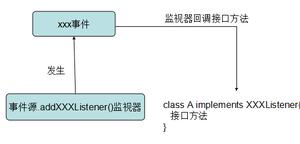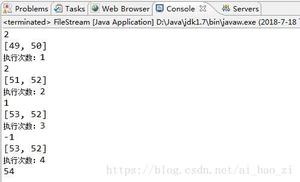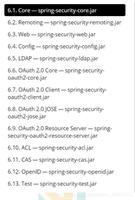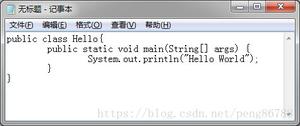java实现雪花算法,不使用synchronized,无锁实现

package com.sudytech.orm2.surpport.util.seq;import java.util.Date;
import java.util.concurrent.atomic.AtomicStampedReference;
/**
* 雪花算法生成唯一id,线程安全,使用元字库,无同步锁实现
* <pre>
* 0-00000000000000000000000000000000000000000-0000000000-000000000000
* x-yyyyyyyyyyyyyyyyyyyyyyyyyyyyyyyyyyyyyyyyy-zzzzzzzzzz-dddddddddddd
* (x) 1bit,不用,二进制中最高位是符号位,1表示负数,0表示正数。生成的id一般都是用整数,所以最高位固定为0。
*
* (y) 41bit-时间戳,用来记录时间戳,毫秒级。 - 41位最大值,换算成"年"最大可以表示约69年
*
* (z) 10bit-工作机器id,用来记录工作机器id。 - 可以部署在个多个节点,包括5位datacenterId和5位workerId
* 5位(bit)可以表示的最大正整数是,即可以用0、1、2、3、....31这32个数字,来表示不同的datecenterId或workerId
*
* (d) 12bit-序列号,序列号,用来记录同毫秒内产生的不同id。 -
* 12位(bit)可以表示的最大正整数是,即可以用0、1、2、3、....4094这4095个数字,来表示同一机器同一时间截(毫秒)内产生的4095个ID序号。
* </pre>
*/
public class SnowFlower {
// 最大序列,12位
private static final int MAX_SEQUENCE = (1 << 12) - 1;
// 起始时间, 2016-01-01
private static final long START_TIME = 1451577600000L;
//最大时间戳, 41位
private static final long MAX_TIME = (1L << 41) -1;
// 带时间的序列,原子操作
private AtomicStampedReference<StampedSequence> current;
// 数据中心id
private long datacenterId;
// 工作id
private long workerId;
//提前计算好的机器id
private long machineId;
public SnowFlower(int datacenterId, int workerId) {
StampedSequence dt = new StampedSequence(START_TIME, 0);
current = new AtomicStampedReference<SnowFlower.StampedSequence>(dt, 0);
int maxId = (1 << 5) -1;
if(datacenterId < 0 || datacenterId > maxId) {
throw new IllegalArgumentException(
String.format("datacenterId can"t be greater than %d or less than 0", maxId));
}
if(workerId < 0 || workerId > maxId) {
throw new IllegalArgumentException(
String.format("workerId can"t be greater than %d or less than 0", maxId));
}
this.datacenterId = datacenterId;
this.workerId = workerId;
//初始化机器id
machineId = ((this.datacenterId << 5) | this.workerId) << 12;
}
public long nextId() {
StampedSequence seq = nextSequence();
long time = seq.timestamp - START_TIME;
if( time > MAX_TIME) {
throw new RuntimeException("Timestamp overflow! " + new Date(seq.timestamp));
}
long value = (time << 22) | machineId | seq.sequence;
return value;
}
StampedSequence nextSequence() {
//下一个时间戳序列
StampedSequence nextSequence = new StampedSequence(0, 0);
//版本
int[] versionHolder = new int[1];
while (true) {
long now = System.currentTimeMillis();
StampedSequence curSequence = current.get(versionHolder);
if (now < curSequence.timestamp) {
throw new RuntimeException("Clock moved backwards!");
}else if (curSequence.timestamp == now) {
if (curSequence.sequence >= MAX_SEQUENCE) {
//满序列等待下一毫秒
continue;
}
nextSequence.timestamp = curSequence.timestamp;
nextSequence.sequence = curSequence.sequence + 1;
boolean set = current.compareAndSet(curSequence, nextSequence, versionHolder[0], versionHolder[0] + 1);
if (!set) {
// 无锁更新失败,重新获取
continue;
}
break;
} else {
nextSequence.timestamp = now;
nextSequence.sequence = 0;
boolean set = current.compareAndSet(curSequence, nextSequence, versionHolder[0], versionHolder[0] + 1);
if (!set) {
// 无锁更新失败,重新获取
continue;
}
break;
}
}
return nextSequence;
}
/**
* 带时间戳的序列
*/
static class StampedSequence {
private long timestamp; // 时间戳
private long sequence; // 序列
public StampedSequence(long stamp, long sequence) {
super();
this.timestamp = stamp;
this.sequence = sequence;
}
}
/* 测试 */
public static void main(String[] args) {
SnowFlower snow = new SnowFlower(1, 1);
for (int i = 0; i < 300; i++) {
long seq = snow.nextId();
System.out.println(Long.toString(seq, 2));
}
}
}
以上是 java实现雪花算法,不使用synchronized,无锁实现 的全部内容, 来源链接: utcz.com/z/515936.html









